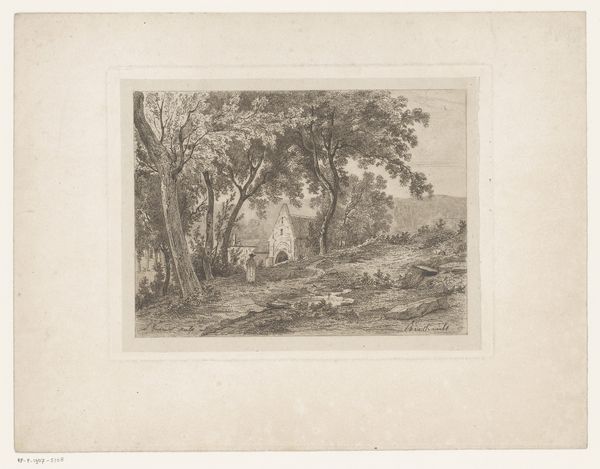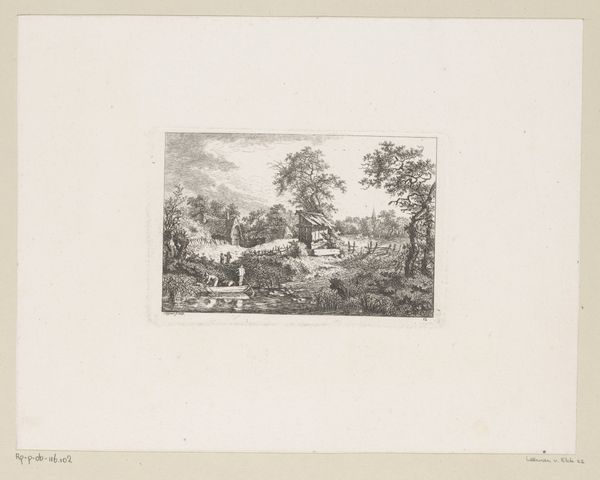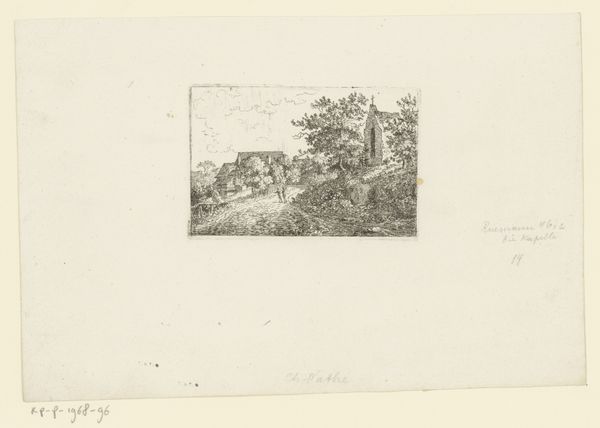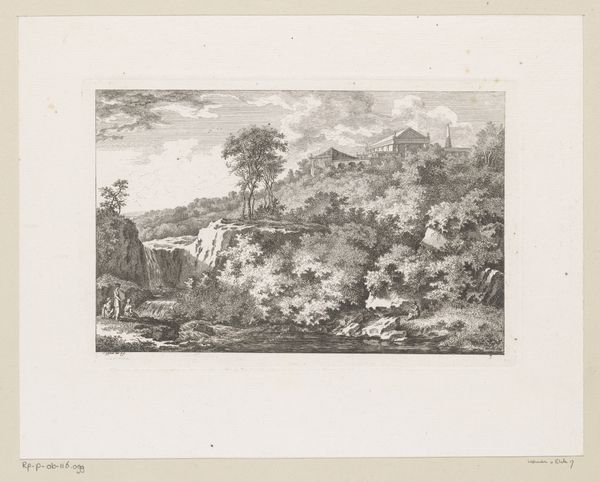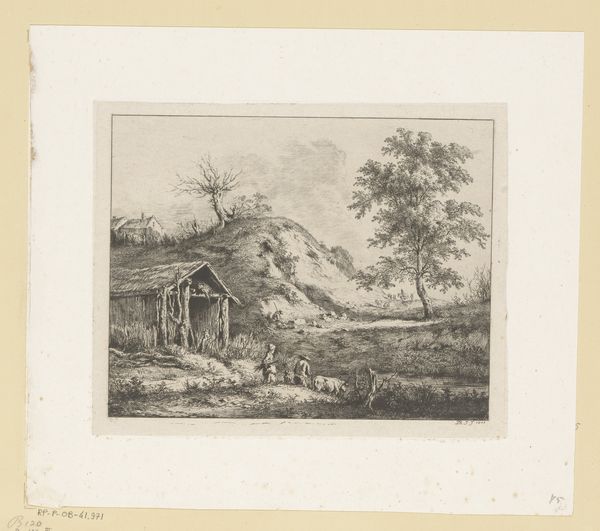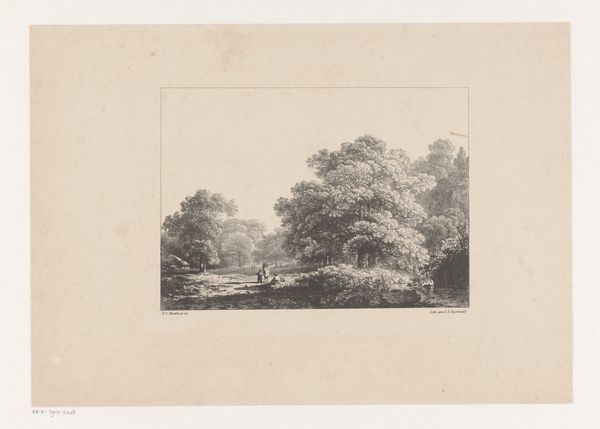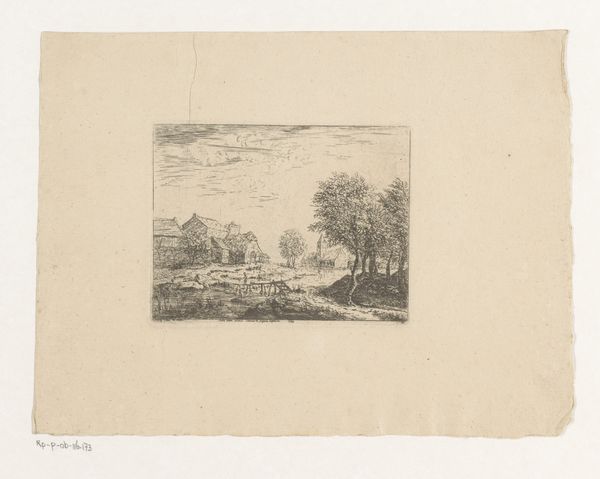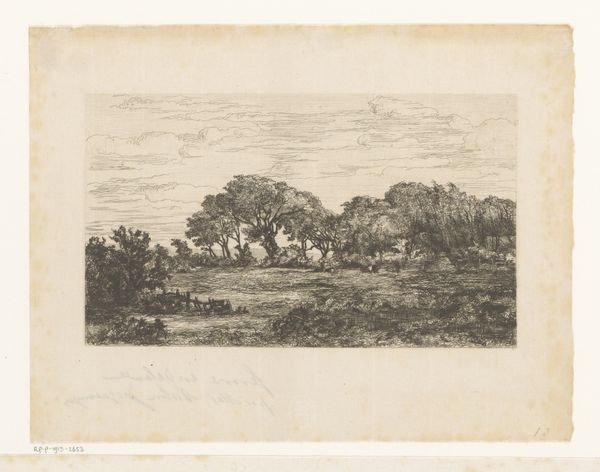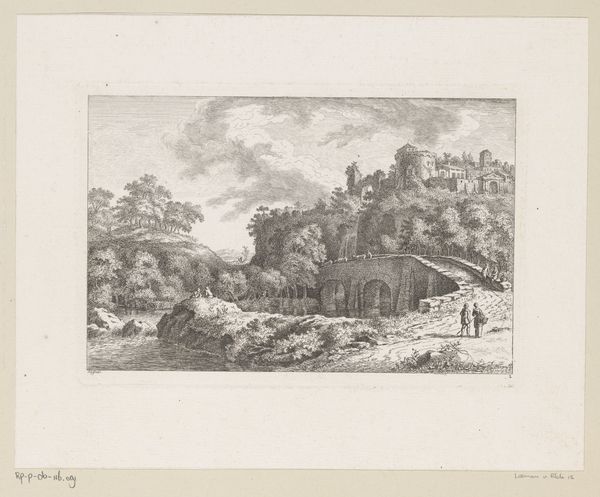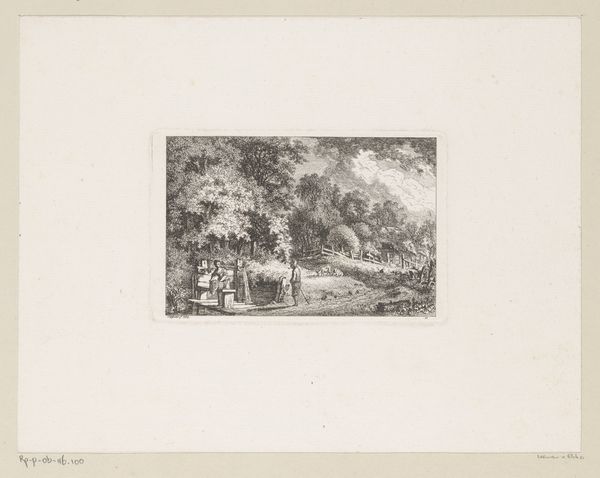
print, etching
# print
#
etching
#
landscape
#
romanticism
#
realism
Dimensions: 58 mm (height) x 95 mm (width) (plademaal)
Editor: Here we have "Landskab," a landscape etching by Ludvig Messmann from 1849. The level of detail for such a small print is really striking. It's hard not to feel a sense of nostalgia looking at it. What can you tell me about it? Curator: What I find compelling is how Messmann’s work intersects Romantic ideals with the burgeoning Realist movement. Consider the historical context: 1849 was a time of significant social upheaval across Europe. The revolutions demanded representation of ordinary life. Does this landscape resonate with those social and political undercurrents for you? Editor: I hadn't considered the revolutionary context! I guess I see it as a retreat from that turmoil, a celebration of rural life. Is it really a commentary on society? Curator: Perhaps it's both. The rise of Realism in art was intrinsically linked to the desire to depict truth and social realities. However, choosing a landscape can also be seen as a form of subtle protest. Who controls the land? Who has access to its resources? The image becomes charged. Editor: So, even in a seemingly apolitical landscape, we can find layers of social commentary? The quiet cottage almost becomes a symbol of resistance. Curator: Precisely. The etching becomes a site where Romantic longing meets Realist observation, subtly questioning societal power structures. It reminds us that art is always in dialogue with its time. Editor: That’s fascinating! It makes me see how even quiet art can have a powerful voice, deeply rooted in the struggles of its time. Thank you. Curator: Indeed. Considering those interwoven historical threads always adds another layer of meaning.
Comments
No comments
Be the first to comment and join the conversation on the ultimate creative platform.
